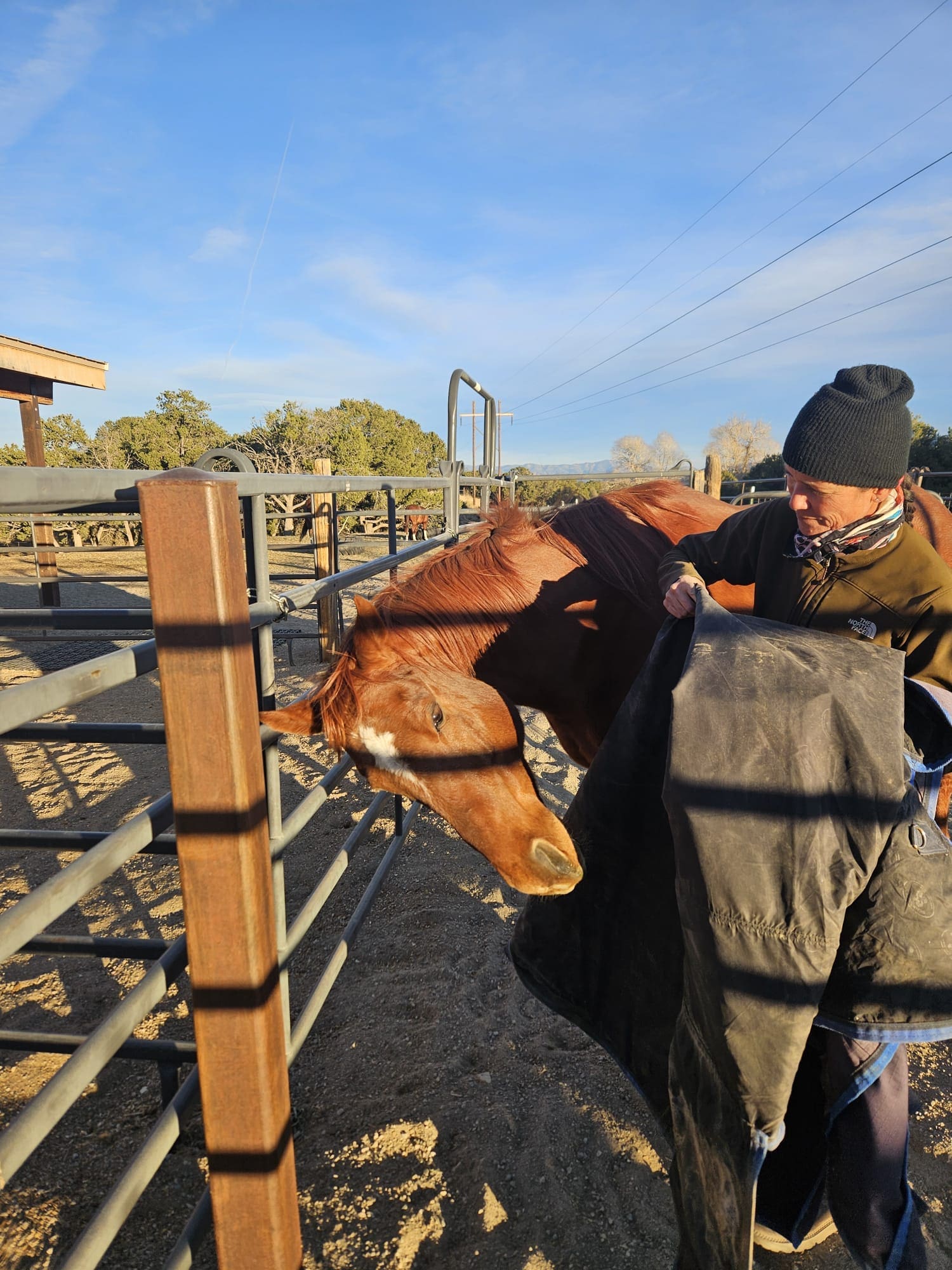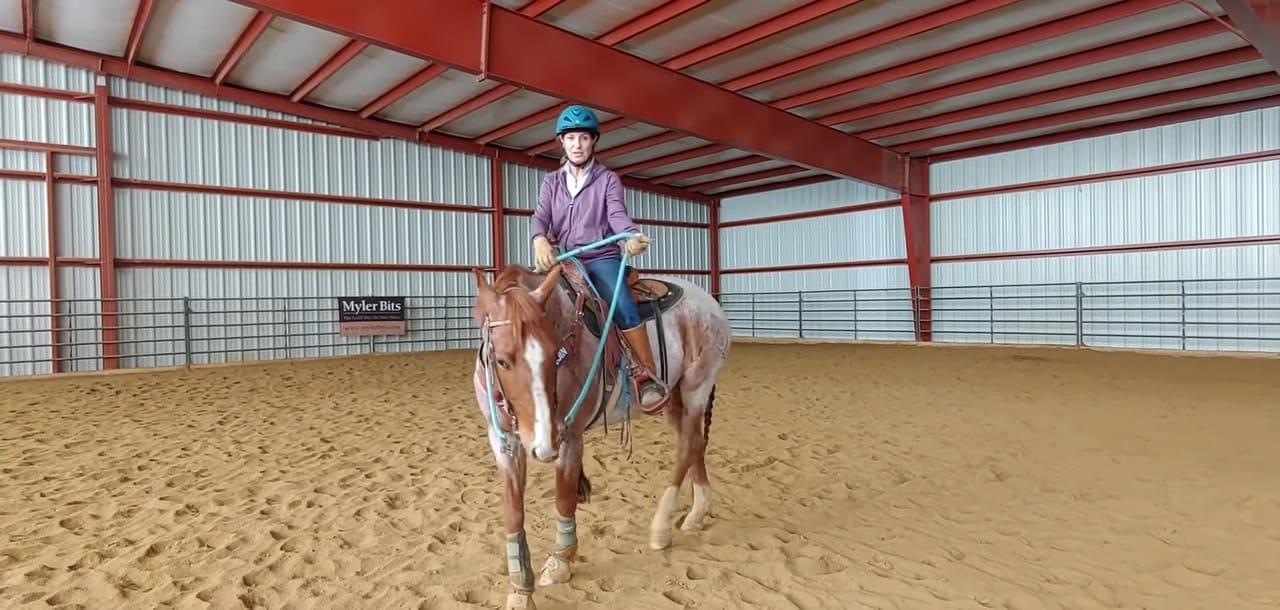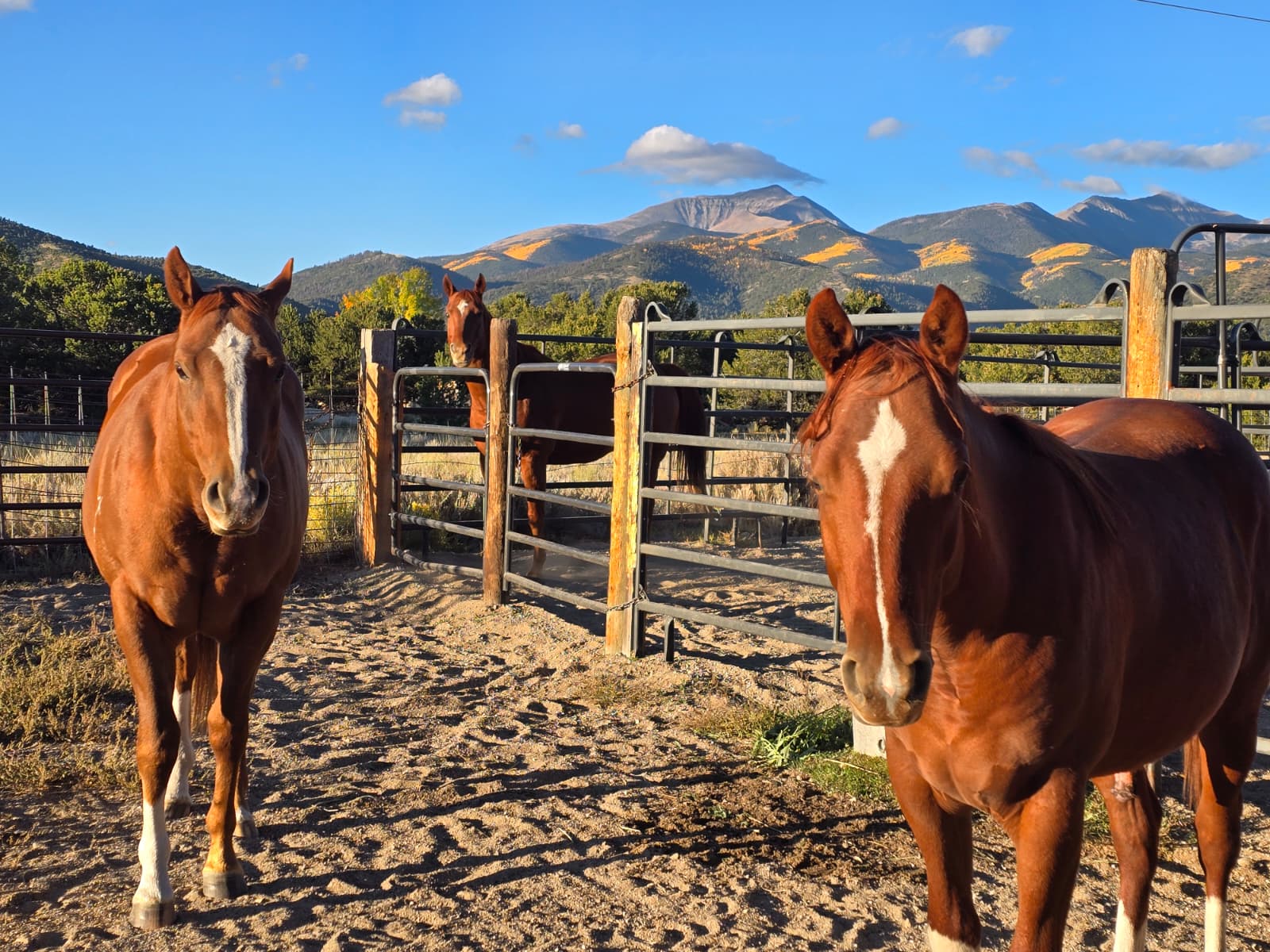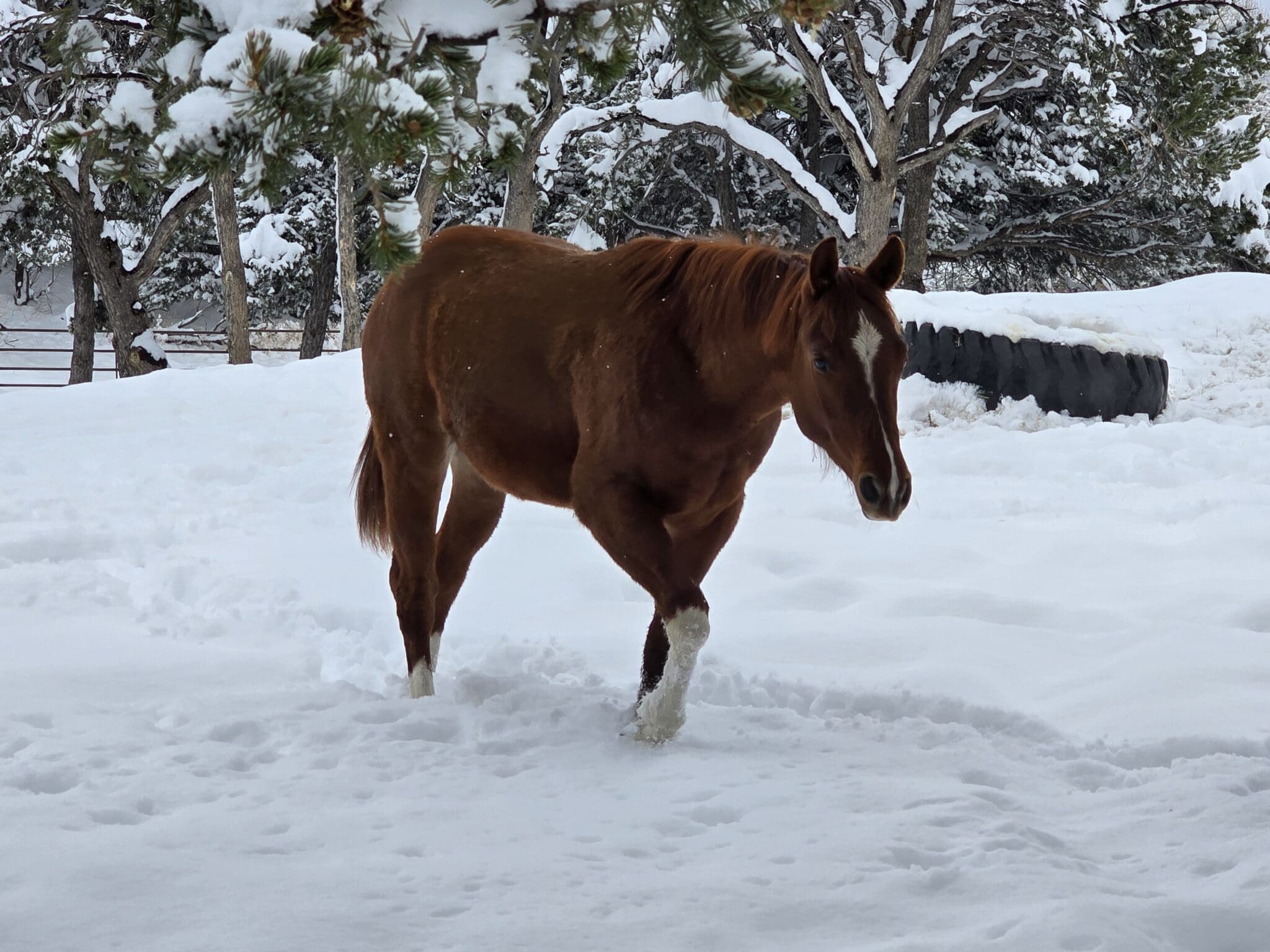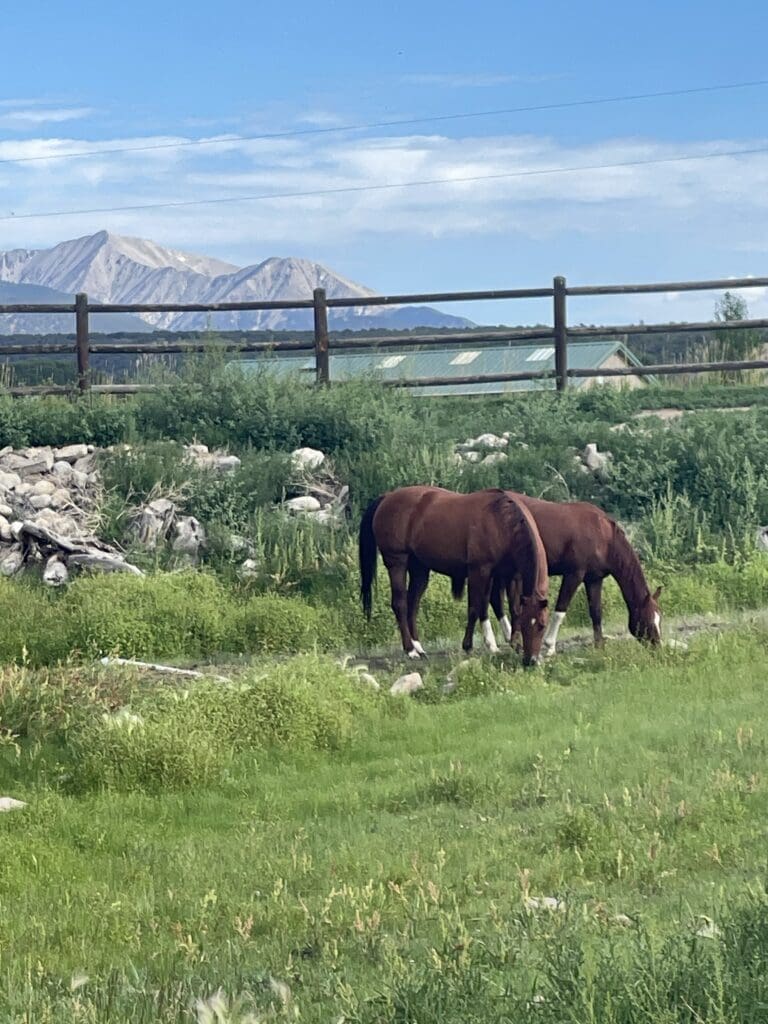
Annie and Rip Enjoying Long Summer Days.
The long days of summer are upon us, and here at the ranch, we are making the most of them. The horses have settled into their seasonal rhythm—mornings grazing in the pasture, afternoons in the shade of the paddock, and the kind of relaxed routine that only comes when the weather is warm and life is good.
This month, we welcomed a new addition to our herd—a two-year-old gelding colt who brings youthful energy and fresh dynamics to our already tight-knit group. After completing his quarantine, we began the slow, thoughtful process of integrating him with the rest of the horses. Introducing a new horse into a well-established herd is never something I rush. Horses are social animals with complex hierarchies and giving them time to sort things out safely is key to a successful transition.
A New Dynamic for the Herd
Our first step was to let the new colt meet the others over the fence. Not surprisingly, Tomcat was the first to engage. His interactions were fascinating to watch—he clearly asserted his dominance but did so in a calm and communicative way. The new colt wanted no trouble and wisely walked away when Tom asserted himself. Eventually, each horse came over to sniff and say hello, then quietly returned to grazing, as if to say, “We’ll see about you later.”
Once the fence-line introductions went smoothly, we turned Annie and Rip out into the large paddock with the new colt. Annie, true to form, wanted nothing to do with him. She charged him three times just to make her point, then went back to ignoring him. Rip, on the other hand, was curious and cautiously approached the newcomer. Before long, the two youngsters were sparring and playing—exactly the kind of interaction I had hoped for.
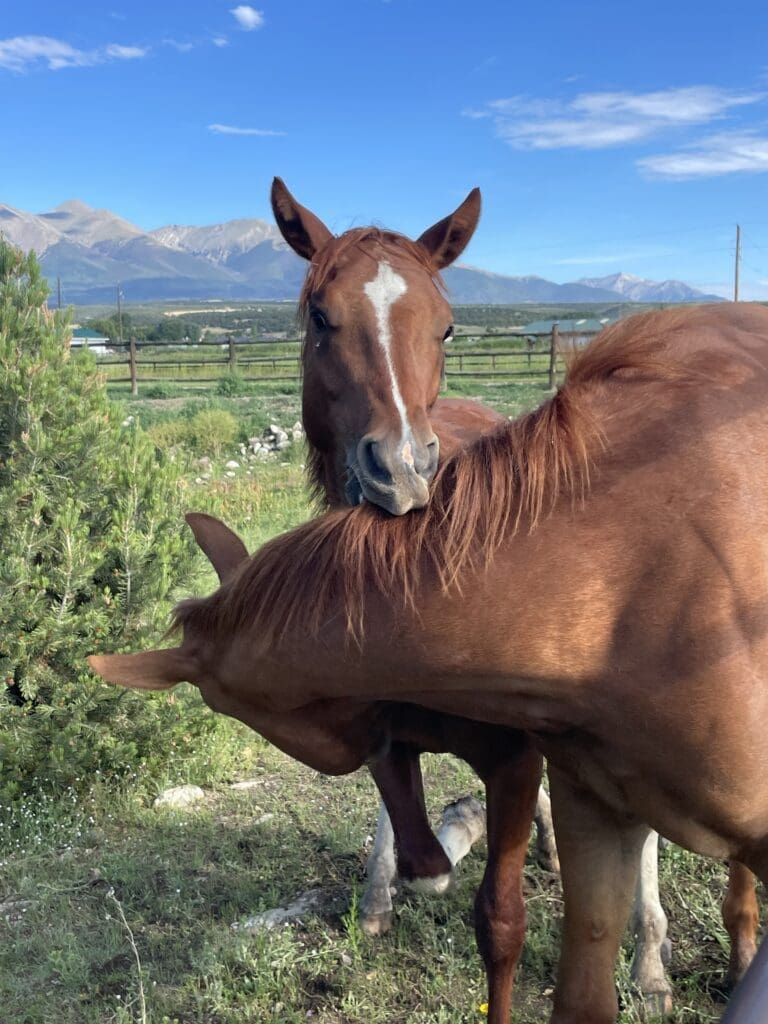
A Budding Friendship and a Gentle Shift
The next day, we repeated the turnout with the same trio. Once the dust settled, we took Annie out and put her back with the older geldings. She walked off without so much as a glance back at Rip—seemingly choosing the company of her old buddy Casper over mothering duties. Meanwhile, Rip didn’t seem too concerned. He enjoyed his playdate with the new colt and only looked for his mama a couple of times.
This new relationship is important for Rip. Young horses have a strong need to play, spar, and test physical boundaries. Older horses tend to lose patience with these antics, so keeping the two youngsters together gives them the outlet they need while also encouraging Rip’s growing independence from Annie. It’s a win-win—Rip continues to develop emotionally and socially, and Annie gets a well-earned break from motherhood.
Looking Ahead
As we move deeper into summer, I’m excited to see how this new dynamic unfolds. Rip is entering a stage where peer interaction becomes critical to his development, and I believe this new colt will be a good match for him. The foundation for a strong herd has always been rooted in thoughtful introductions, clear communication, and allowing the horses to work things out on their own—within safe parameters, of course.
The quiet strength of our older geldings, the budding leadership of Tomcat, and the energy of our two young colts have created an intriguing mix. Each horse has a role to play, and it’s a joy to observe how their relationships shift and grow with each passing day.
Get Julie Goodnight’s “Speak the Language: Horse Behavior (Streaming)” To learn more about herd behavior.
Check out Julie Goodnight’s Foal Handling Series:
